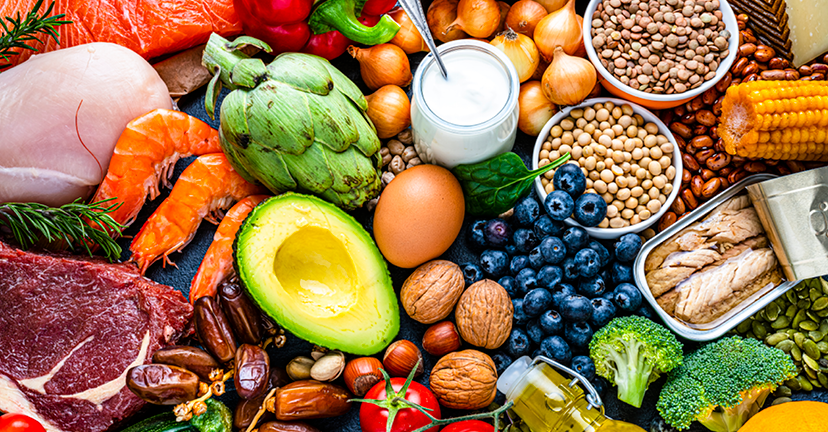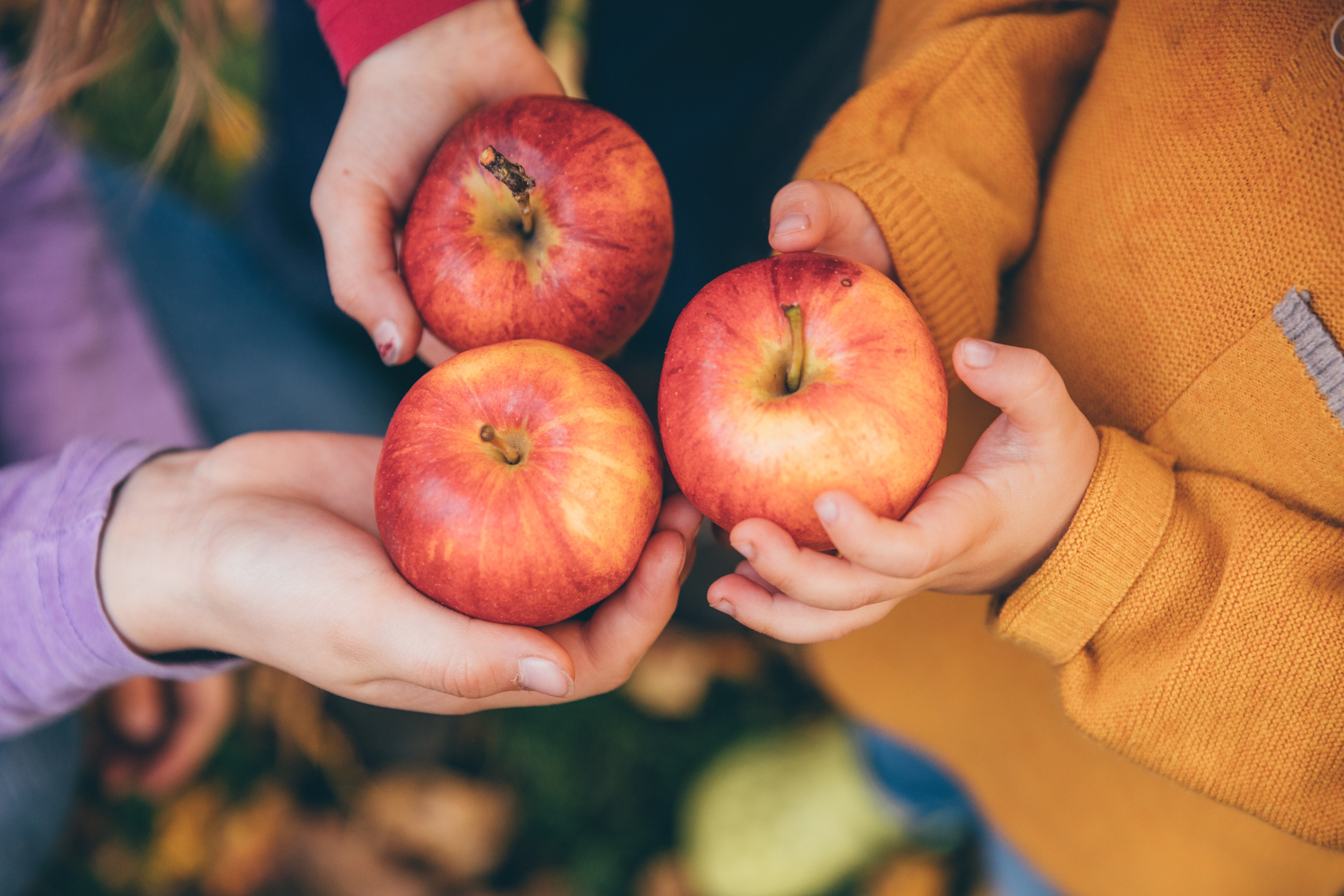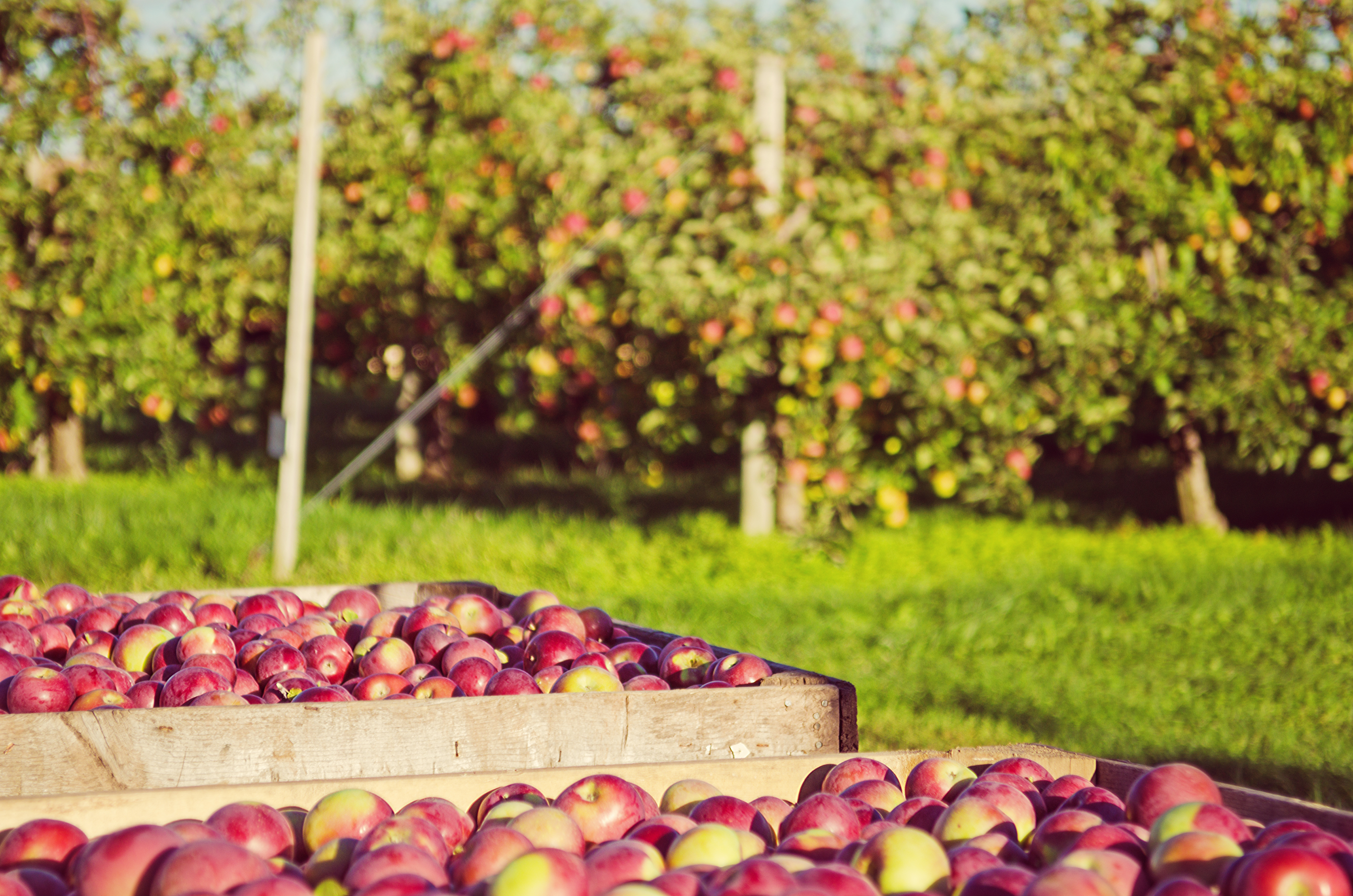
National Nutrition Month – Celebrate the Bounty and Benefits of Eating Well
Ellie Wilson
MS, RDN, CDN
March is National Nutrition Month®, an annual celebration and education campaign inspiring the national appetite for the benefits eating well brings to your life and wellbeing. This year marks the 51st year this outreach event is delivered by members of the Academy of Nutrition and Dietetics, the world’s largest and most recognized nutrition professional organization. Academy members have led the food and health conversation for over 100 years! The term “dietitian” was coined in Lake Placid, NY in 1917, and the Academy was founded in Cleveland, OH, later that year. ₁
This year the campaign theme is Beyond the Table – a call to action to engage in eating well and choosing well on a routine basis, wherever you eat! While there is no perfect eating style, we have good information on the basics of better eating that can be part of every food occasion. Check these options out – which would be a food fit for you?
Keep food safety in mind at home and anywhere you eat.
- Eat more fruits and vegetables every day – most Americans have lots of room to add more to meet their wellness and prevention needs. Start with doubling up what you already enjoy, working your way up to half your plate for each meal or snack!
Eat mindfully – for example, at home is usually better than eating out, and bring lunch instead of buying it. Create a grocery game plan to save time and money!
- Be purposeful with portion control and limiting food waste – our weekly Value Plan blog ideas are right on track to help with that! We are striving to ensure our ideas bring flavor, nutrition, budget, and time together in an easy, enjoyable way.
- Diet culture is off the menu – but heritage and traditions can ensure food is always a bridge builder, connecting families, communities and continents through cuisine and culinary collaborations.
Price Chopper and Market 32 are very proud to be your neighbor – our mission is to help you feed and care for your family! Check out our website for nutrition information and resources!
Wishing you the best for National Nutrition Month
₁. Accessed 3/5/2024; https://www.eatright.org/about-the-academy
Find more healthy eating tips at:
www.eatright.org

Ellie Wilson
MS, RDN, CDN
Eye health is an often-overlooked issue (no pun intended) until something happens to impact or change vision. Loss of vision is a substantial health challenge with significant impacts on quality of life, and the most common diseases have a long, slow development timeline, leaving many not realizing they are headed for vision issues. Nutrition has been a target for research and consumer interest in this field. Research shows some important nutrient roles in maximizing vision functions, but connecting specific nutrients to specific roles in prevention and management of vision issues has been more challenging than expected.
The good news is that we can connect recommendations for eating more produce, managing blood pressure and blood sugar, and enjoying foods that are part of a Mediterranean style of eating to reduced likelihood of chronic vision challenges such as cataracts, macular degeneration, or glaucoma. There is a significant linkage between ensuring heart and artery health is maintained, because all nutrients that have a relationship with protecting vision also need to reach those tissues via a strong cardiovascular system.
Orange flags produce that offers significant amounts of Vitamin A, essential to ensuring eyes can see light and color – carrots, sweet potatoes, cantaloupe, and apricots are on the menu for this critical nutrient. Vitamin A also protects against dry eye and has a role in the quality of tears. Antioxidant Vitamin C, found in red peppers, oranges, strawberries, and more, has been correlated with prevention or delay of macular degeneration.
Vitamin D and omega-3 fatty acids also have roles in eye health, along with bioactive compounds lutein and zeaxanthin. Lutein and zeaxanthin are found in leafy greens, tomatoes and eggs, and are critical to the health of the macula, which is the center of vision function in the eyes. Most of these vitamins and compounds are fat-soluble, meaning they need some healthy fats in food to be absorbed well, which opens the door for delicious foods like avocado, nuts, seafood and olive oil – hopefully, they were all on your grocery list already!
Supplements also have some supportive data and are most beneficial for those with macular degeneration or at risk for it. The Age-Related Eye Disease Study 2 found supplements with specific amounts of the vitamins highlighted have positive benefits when used in conjunction with recommendations from your health care provider. Learn more about that here Vitamins for AMD – American Academy of Ophthalmology (aao.org).
Bottom line – plant-forward, nutrient-rich foods are important to eye and overall health throughout your life. Enjoy them as part of your vision of a healthy future!

Ellie Wilson
MS, RDN, CDN
National Diabetes Month
November is National Diabetes Month, and a chance to highlight how to reach a better balance of food and health when navigating the spectrum of diabetes diagnoses.
Prediabetes is an early-stage diagnosis – it shows metabolism is changing and signals a prime time to activate strategies that can reverse that change or delay development of diabetes. Diabetes Prevention Programs ₁ are offered free in many communities and may be available through your health insurance. The information and strategies offered support weight loss, including changing how the body uses and stores carbohydrates. A 5% weight loss can reduce the risk of developing diabetes by 58%, and delay onset by about 8 years.
Insight – A recent study ₂ showed the order of eating a meal, meaning eating non-starchy vegetables, protein foods, then carbohydrate foods, can have a significant effect on weight loss and blood glucose levels. The pilot study showed participants with prediabetes lost weight, could make it work consistently in their lifestyles, and increased their vegetable intake – all keys to reducing risk of developing diabetes.
Because weight loss has such an impact on metabolism, the medications for diabetes that have shown they can rapidly lower weight have become popular, and demand is straining supplies for those with diabetes that need them. Those medications, called GLP-1 analogs, (such as Wegovy and Ozempic brands), extend the action of one hormone humans (GLP-1) make to signal satisfaction, lower appetite and slow down eating. But the cost and limited supply means we must prioritize them for those already managing diabetes. The good news is, we can eat foods that help raise GLP-1 hormone production. Foods high in certain types of fiber drive production of GLP-1. Fiber is also a key food component in whole grains and produce that supports weight loss, gut health and heart health. Only 1 out of 10 people eat sufficient fiber or produce, so adding more produce and whole grain fiber is a pathway to move your health forward a few bites at a time. ₃
Where to start? With foods you already enjoy. Double up the amount of veggies on your plate, add eat them first. Start the day with an apple or other whole fruit. Oatmeal and barley also contain the fibers that have the holistic impact of shifting fullness and supplying the preferred type of fiber for optimizing gut hormones and microbiome health.
Learn more about your Price Chopper and Market 32 stores! We have great resources to help you reach your best health. Our Pharmacy teams can assist with accessing supplies, medications and information through the Diabetes AdvantEdge program. The Know Your Colors nutrition guides can assist with choosing well, including Carb Smart, Whole Grain and Heart Smart choices that help make eating well easy and delicious.
Check out these recipes and links to get started on better balance!
- Diabetes Prevention Program
- Shukla AP, Karan A, Hootman KC, Graves M, Steller I, Abel B, Giannita A, Tils J, Hayashi L, O’Connor M, et al. A Randomized Controlled Pilot Study of the Food Order Behavioral Intervention in Prediabetes. Nutrients. 2023; 15(20):4452. https://doi.org/10.3390/nu15204452
- Martinez TM, Meyer RK, Duca FA. Therapeutic Potential of Various Plant-Based Fibers to Improve Energy Homeostasis via the Gut Microbiota. Nutrients. 2021 Sep 29;13(10):3470. doi: 10.3390/nu13103470. PMID: 34684471; PMCID: PMC8537956.

New Year, New Recipes
We’re on a mission to keep expanding our library of recipes and our at-home menus. The new year is a wonderful time to add some new options to our repertoire. Whether it’s foods we haven’t tried before or new variations of old favorites, new dishes keep life fresh and exciting! We’ve put together a list of recipes for you to try in 2023. Check it out and enjoy!
Chicken Banh Mi Bowl: In Vietnamese cuisine, Banh Mi is a short baguette with thin, crisp and soft crust. Typically served as a sandwich, where chicken is a popular variety. This recipe turns that popular sandwich into a bowl, with all the common features of a delicious Banh Mi.
Chicken & Roasted Beet Harvest Salad: If you’re looking for a fresh, new salad recipe this Chicken and Roasted Beet Harvest Salad is the answer. Roasted beet adds a delicious flavor to the dish and compliments chicken beautifully.
Slow Cooker Farro & Garbanzo Mujadara: Mujadara is a staple dish in Arabic culture. Consisting of lentils cooked together with sauteed onions and grains, in this case farro. Try it for a tasty twist to your normal routine.
Moroccan Turkey Meatballs with Barley & Lentils: Experience meatballs like never before, featuring Moroccan flavors that will make your mouth water. Meatballs offer a variety of options when it comes to flavoring and this may be one you have yet to try.
Chili Lime Portobello Fajitas: These Chili Lime Portobello Mushroom Fajitas make for an epic taste adventure. Plus, they’re a lovely alternative if you’re looking to fill your fajitas with something other than chicken or steak.
Baked Zucchini Fries: Need a good appetizer to add to your skillset? Try these Baked Zucchini Fries. They’re so good and they add a unique variation into the fried foods game.
Garlic Shrimp Over Parmesan Grits with Bacon & Pepitas: Elevate your shrimp & grits with this superstar recipe! Parmesan, bacon, and pepitas blend beautifully and take this already delicious dish to a whole new level.
Grilled Swordfish Kabobs with Peanut Chili Sambal: Need some new seafood recipes? We’ve got you covered. Try these Swordfish Kabobs with Peanut Chili Sambal. Yum!
Indian-Spiced Cauliflower with Garbanzo Beans and Tomatoes: Cauliflower is a versatile vegetable that often doesn’t get taken to its full potential. Try this Indian-Spiced Cauliflower for an example of the wonder’s cauliflower can do for your taste buds.
Pepper-Crusted Steak with Red Wine-Shallot Sauce: Last but not least, give this Pepper-Crusted Steak a try! Complimented with a delicious Red Wine-Shallot Sauce this one is sure to please for a lovely evening at home.

Diabetes and Chronic Illness - Fresh Tips on Food Safety
Ellie Wilson
MS, RDN Manager, Lifestyles and Wellness
Living well with a chronic health issue like diabetes is challenging. Prevention is key – enjoying foods that support good blood sugar control and following medication directions enhance long-term health and quality of life. To maximize the benefits of better food choices, be sure good food safety practices are on the menu.
The immune system protects health best when your body is well-nourished. Following food safety and nutrition care guidance should support good diabetes management and healthy immune systems. Diabetes may impact immune function by weakening immune system response, and slowing down digestion, allowing bacteria on food to multiply. Once infection has begun, it can be very difficult to treat. Adults 65 and older with diabetes can be especially vulnerable. Check out the tips and tools you can use to ensure you and your family can navigate successfully prevent food safety concerns.
Know Foodborne Illness Symptoms and Get Medical Care Quickly
Foodborne Illness Symptoms can worsen diabetes/all chronic illness symptoms, including elevating blood sugar and risk of dehydration. If you suspect foodborne illness, call your healthcare provider, or seek emergency care immediately.
Smart Shopping
- Many shoppers use recycled bags for packing groceries. Be sure to wipe these out or wash them each time you unpack them, with antibacterial wipes or spray and clean paper towels.
- Meat, seafood and fresh produce should be bagged before placing in a cart or shopping bag, so they don’t become cross-contaminated. If your grocery store limits plastic bags, bring your own clean bags to place foods in – clear bags allow for scanning prices and safe handling.
- Purchase pasteurized eggs and dairy products and use best-by and sell-by dates to ensure food purchases are fresh.
- Read labels to be sure foods will meet your needs for enjoyment and diabetes management.
Smart Storage and Prep
- Go directly home – if travel time is extended, use insulated bags and/or coolers to maintain food temperatures.
As soon as possible after shopping or grocery delivery, get chilled and frozen foods put away safely.
Cool tools available in the grocery store to keep food safe:
- Clean shopping bags, reusable ice packs, insulated shopping bags, and coolers.
- Appliance thermometer for the refrigerator – store food at 40 degrees F or lower.
- Cooking thermometer – find temperature charts to ensure foods are cooked to safe serving temps.
- Easy-clean plastic cutting boards (some are color-coded for meat, seafood, produce). Use clean knives and utensils while preparing foods, and do not reuse utensils, bowls or plates that have had raw food contact.
- Hot, soapy water, bleach and antibacterial wipes assist with cleaning cutting boards, utensils, and shopping bags.
- Moisturizing hand soap – keeping hands clean and skin in good condition are both important to diabetes management. BONUS – Good handwashing reduces risk of of flu, pneumonia, COVID-19, and other high-risk infections for those with chronic health conditions.
- Store raw and cooked foods safely in regularly cleaned designated refrigerator sections. If any items are damaged or have any indication of spoilage, don’t hesitate to discard. Follow the food safety mantra of “When in doubt, throw it out!”
Stay up to date on food safety issues by checking the webpage, and downloading the food safety app. Find more resources there and at the Partnership for Food Safety website.
References
https://extension.umd.edu/resource/food-safety-persons-diabetes
https://www.fda.gov/food/people-risk-foodborne-illness/food-safety-older-adults-and-people-cancer-diabetes-hivaids-organ-transplants-and-autoimmune

Diabetes - Shopping Well On A Budget
Ellie Wilson
MS, RD Senior Nutritionist
Everyone is on a budget, which impacts most purchases, including the food we buy. For those managing diabetes, smart food choices are recognized as key to overall wellness. Balancing the budget and balancing health is possible, with a few insights and a little planning.
Planning is the first hurdle – everyone is so busy; we find it easy to ignore the concept. However, most of us plan “accidentally” – we have a set routine for meals/foods we eat throughout the week, as well as typical items we buy or prepare for lunch, dinner and snacks. It changes seasonally – salads in summer, with meat on the grill, soup in the fall and winter, as well as air fryer/Instant Pot or slow cooker meals. The first step to planning is just putting your “usuals’ down on paper, with dollar amounts you usually spend (or the budget amount you are trying to stick to!) Then, determine if there are a few tweaks you can make to put better-for-you in the basket on your budget.
It may be tough to find a good starting place. If you have diabetes, or are at risk, personalized nutrition care from a Registered Dietitian-Nutritionist (RDN) is the gold standard. If you haven’t seen a dietitian in the last year, consider getting a referral from your healthcare provider. Your health needs change over time, along with research and food items available, medications – make it personal “policy” to meet with the RDN at least once per year. Check your grocery store for nutrition information and resources – like the Know Your Colors nutrition guides at Price Chopper/Market 32, and the Diabetes AdvantEdge program Diabetes AdvantEdge program at the store pharmacies. Food and medications are increasingly important to health and care, and you may be pleasantly surprised by the resources your grocery store offers.
Tips and Hacks
Hate to cook on Monday? A Price Chopper Rotisserie Chicken could be a problem-solver. Serve with a scoop of frozen broccoli microwaved with a small potato – done, healthy, fast, and cheap. Both the frozen broccoli (as well as any other frozen vegetable or fruit) and the potato are smart/budget-buster choices for eating well.
Breakfast is essential to blood sugar management. Eggs are an inexpensive source of good protein, and easy to mix up with leftover/frozen vegetables for an omelet. Like toast with that? Check the shelf tag or online for Carb Smart choices and read labels to be sure they meet your needs. Carb Smart, Low Sodium, Heart Smart and more tags can be found on the shelf and online – you can plan your smart shopping in a snap. Enjoy eating well when you shop at Price Chopper and Market 32!
Shop Carb Smart!

Back-to-School Allergy Planning - What You Need to Know
Ellie Wilson
MS, RDN
Food allergies are a very stressful issue for children and families. Given how diverse our food supply is, and the potential for foods to be ingredients or potential exposure to allergens in kitchens and prep areas means every mouthful is meaningful.
There are nine food allergens identified as having significant prevalence that must be clearly labeled by law. The Food Allergen Labeling and Protection Act [1]was rolled out in 2004 and has been an important tool for those navigating these issues. The original eight allergens are: milk, soy, peanut, fish, shellfish, wheat, (tree) nuts, and eggs, and sesame was added to the federal list in the Spring of 2021.
One of the most common and most concerning is peanut allergy. Sensitivity can range from slight to life-threatening, and the issue may not be on the radar until a frightening health episode. For many with peanut and other severe allergies, it is critical to maintain and carry an epinephrine auto-injector in case of accidental exposure. Family, childcare providers, friends, school nurses and teachers should all be trained to read food labels to avoid allergenic foods, understand signs of exposure and have an emergency response plan. To ease this process, Food Allergy Research and Education, a non-profit supporting those with allergies, has an emergency plan resource document.
The Price Chopper/Market 32 Pharmacy Team is conducting an awareness campaign about epinephrine auto-injector management, ask your pharmacist to assist with keeping these vital devices ready if they are needed. Work with your healthcare provider to ensure an emergency plan is in place.
There is some good news – strong research[2] has shown it is possible to avoid developing a peanut allergy. Infants that show early signs of possible allergy issues, including family history, eczema and egg allergy may be on the road to a peanut allergy as well. If identified early, and coordinated/supervised by an allergist, pediatrician and registered dietitian-nutritionist, it has been shown that peanut allergy development can be mitigated/reduced with very controlled micro-doses (6-7 grams) of peanuts over time, and timing of that intervention is key. Ideally, the process should start when the baby is just starting on foods, at about the 6-month mark. It should NOT be attempted without coordination and supervision of experienced healthcare providers. It is a recent development in allergy prevention and care, discussion of any concerns should occur at one of the first pediatrician visits, so risks can be assessed as soon as possible. Early and medically supervised intervention could offer significant health and quality of life benefits if peanut allergy can be avoided.
[1] https://www.fda.gov/food/food-allergensgluten-free-guidance-documents-regulatory-information/food-allergen-labeling-and-consumer-protection-act-2004-falcpa
[2] Togias A, Cooper SF, Acebal ML, et al. Addendum Guidelines for the Prevention of Peanut Allergy in the United States: Summary of the National Institute of Allergy and Infectious Diseases-Sponsored Expert Panel. J Acad Nutr Diet. 2017;117(5):788-793.
https://farrp.unl.edu/for-consumers

Come Pay Your Due Against The Flu!
Did you know that the single best way to avoid getting the flu is to get a yearly flu shot? During the 2017-2018 flu season, the flu vaccine prevented 7.1 million cases of the flu, 109,000 hospitalizations, and 8000 deaths.1 That’s with only about 42% of adults getting a flu shot! Flu season typically begins around October and can extend well into May but these are just the most common months. You can get the flu any time of year so it is always recommended to get your flu shot early!
For a healthy adult the flu may not seem to be that big of a deal but, the flu can greatly increase the chance of heart attack or stroke. Adults over 35 with a confirmed case of the flu are 6-10 times more likely to suffer their first heart attack and are about 8 times more likely to suffer their first stroke.2,3 Those of high risk stand to benefit from flu vaccines as well. People with type II diabetes who also receive yearly flu vaccines are 30% less likely to have a stroke, 22% less likely to suffer from heart failure, and 19% less likely to have a heart attack.4
Getting a flu vaccine not only helps the recipient but everyone around the recipient. This is especially important for infants under 6 months and those with conditions preventing them from getting a flu shot. Those unable to be vaccinated depend on the rest of us for protection from the flu. The more flu shots that are received, the less flu will spread, and the safer we’ll all be. So head over to your local Price Chopper or Market 32 pharmacy and get your shot!
FAQs:
- Can the flu shot give me the flu?
- No! Flu vaccines are made using dead viruses or pieces of the virus’s genetic code that don’t have the capability to cause illness. It takes 1-2 weeks for your body to develop immunity after receiving the flu shot, another good reason to get your shot early this season!
- Why do I need to get a flu shot every year?
- Each year the flu virus changes, undergoing mutations that can make the previous vaccinations ineffective. Getting a flu shot yearly ensures you have immunity from the latest strain of the flu.
- Is getting a flu shot the only thing I can do to prevent catching the flu?
- While the flu vaccine is the single best way to avoid the flu, there are many things you can do to protect yourself. Frequent hand washing and avoiding those with the flu can go a long way to prevent it from spreading. If you do fall ill it is important to stay home, cover all coughs/sneezes, and limit contact with those around you.
Written by Eugene Kupiec Pharmacy Intern
Sources:
- “2017-2018 Estimated Influenza Illnesses, Medical Visits, and Hospitalizations Averted by Vaccination in the United States | CDC.” Centers for Disease Control and Prevention. Accessed August 14, 2019. https://www.cdc.gov/flu/vaccines-work/averted-estimates.htm.
- Warren-Gash C, Blackburn R, Whitaker H, McMenamin J, Hayward AC. Laboratory-confirmed respiratory infections as triggers for acute myocardial infarction and stroke: a self-controlled case series analysis of national linked datasets from Scotland. Eur Respir J. 2018;51. doi:10.1183/13993003.01794-2017
- Kwong JC, Schwartz KL, Campitelli MA, et al. Acute myocardial infarction after laboratory-confirmed influenza infection. N Engl J Med. 2018;378:345-353.
- Vamos EP, Pape UJ, Curcin V, et al. Effectiveness of the influenza vaccine in preventing admission to hospital and death in people with type 2 diabetes. CMAJ. 2016;188:E342-E351.

Crunch Time!
Ellie Wilson, MS, RDN Senior Nutritionist
Apples are amazing – sweet, tart, crunchy and crave-worthy! This is apple season, and we have the benefit of enjoying local apples and apple cider, especially the super crunchy, super juicy Snapdragon® born and raised in New York! Sweet and spicy, with hints of vanilla, it is a variety that has the bonus of being the product of a cross with the super popular Honey Crisp – YUM! Fun fact – New York ranks second in the U.S. for apple production, with more than 1 billion pounds grown each year!
Farming and harvest of Honeycrisp apples in an orchard in Nova Scotia.
Activate Wellness: November is National Diabetes Month
Ellie Wilson, MS, RDN Senior Nutritionist
 Diabetes is a rising concern for many – almost 10% of Americans have diabetes, and another 30% are at risk. The good news is, eating well to prevent or manage diabetes is the same for everyone.
Some quick tips:
Diabetes is a rising concern for many – almost 10% of Americans have diabetes, and another 30% are at risk. The good news is, eating well to prevent or manage diabetes is the same for everyone.
Some quick tips:
- Make half your plate veggies and fruit for most meals, and you have taken a giant step in the right direction. Fresh, frozen and canned fruits and veggies can all be part of your solution.
- Watch quantities on starchy foods – a small serving of potatoes is fine, whole grain sides like rice and quinoa in smaller servings, and whole grain breads are all okay.
- Lean proteins in moderate portions, including seafood twice per week, dairy, beans and legumes, lean chicken, pork or beef – all fit.
- Good fats, like olive oil, avocados and olives, are important to ensuring food tastes good and enhances absorption of key nutrients.
- Even dessert – small servings, or low/no calorie treats, are a good way to make delicious and carb-conscious choices.
- Milk or water round out your meals and snacks, and offer vital nutrients and hydration.
- Our Pharmacy team is also a wonderful resource and has a free medication and supplies program. https://www.pricechopper.com/pharmacy#/



